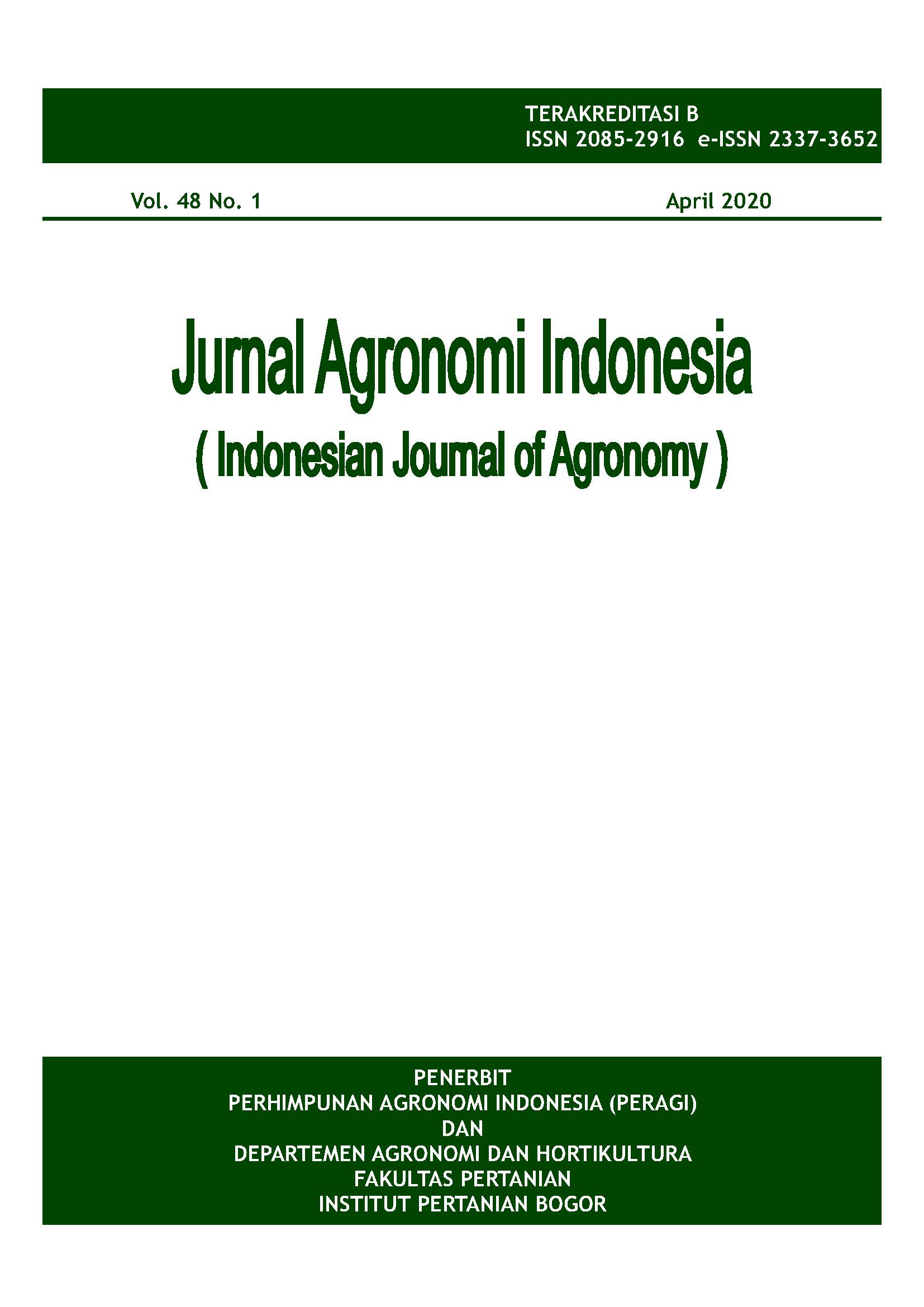Perbedaan Tanggap Morfologi Akar Galur Inbrida Sorgum pada Kondisi P Rendah
Abstract
Plant root has various responses for adaptation under low P condition. This study aims to observe information on root morphology responses from sorghum inbred lines under low P condition. This experiment used a randomized complete block design nested with two factors, namely genotype and P fertilizer dosage. The genotype consisted of 11 sorghum inbred lines (RIL-F8), B-69 (susceptible check), Numbu (tolerant check), and two national varieties (WHP and Kawali). Fertilizer dosage used a dose of sufficient P (66.76 kg ha-1 P2O5) and a dose of low P (33.38 kg ha-1 P2O5). The result showed there were differences in root morphological response between inbred lines (RIL-F8) sorghum under low P conditions. The tolerant lines had a higher character of the longest root length (41.33-61.87 cm), root volume (8.87-12.87 mL), root diameter (0.88-1.02 mm), and proteoid root total (2.4-4.0) as compared to sensitive lines In low P condition. These characters associated with the high biomass of tolerant lines in low P conditions, therefore it could be used as an important character for the selection of root adaptation in low P conditions.
Keywords: proteoid root, biomass, phosphorus, tolerant













